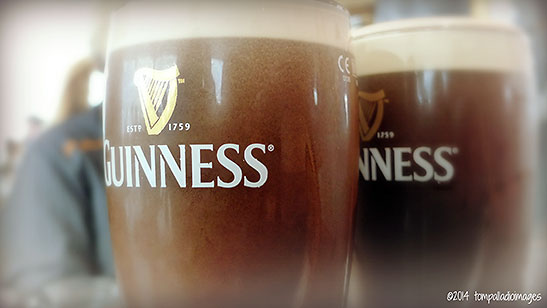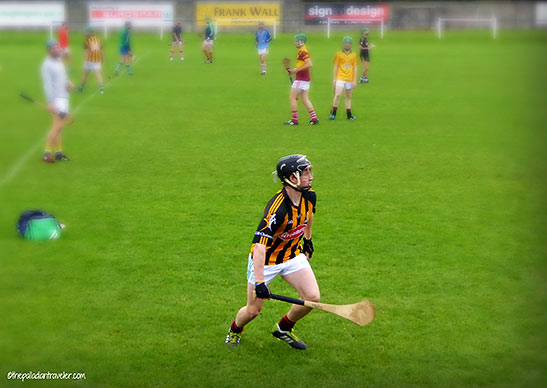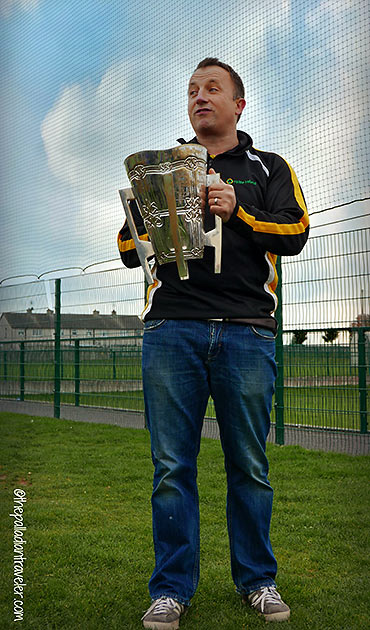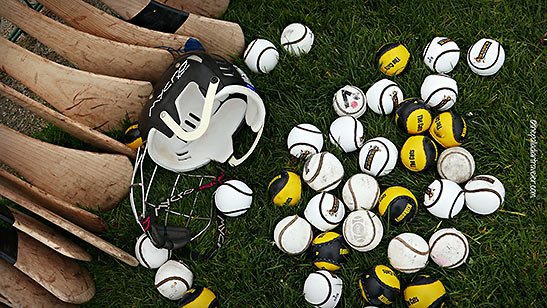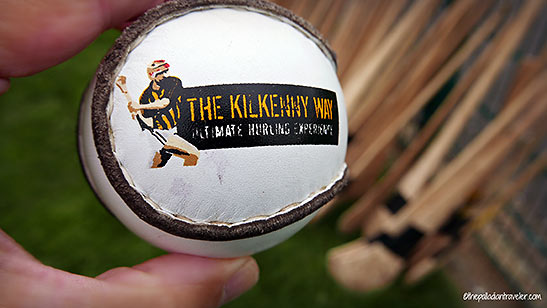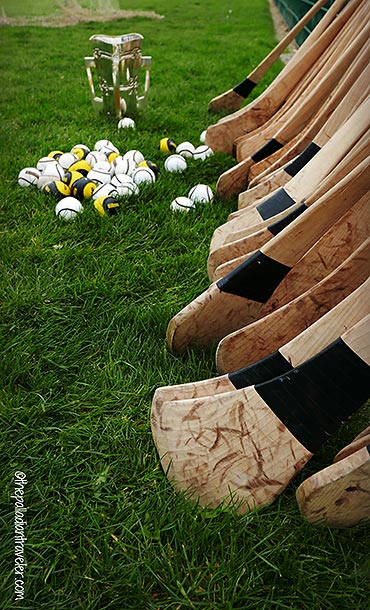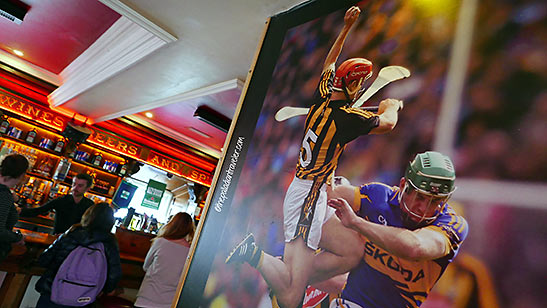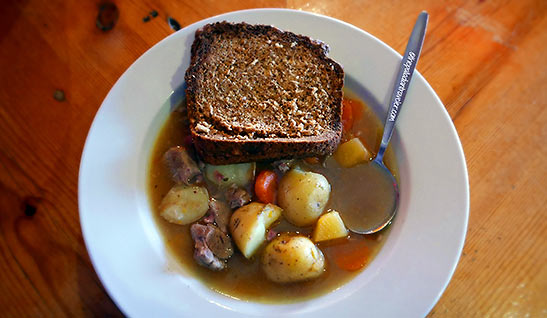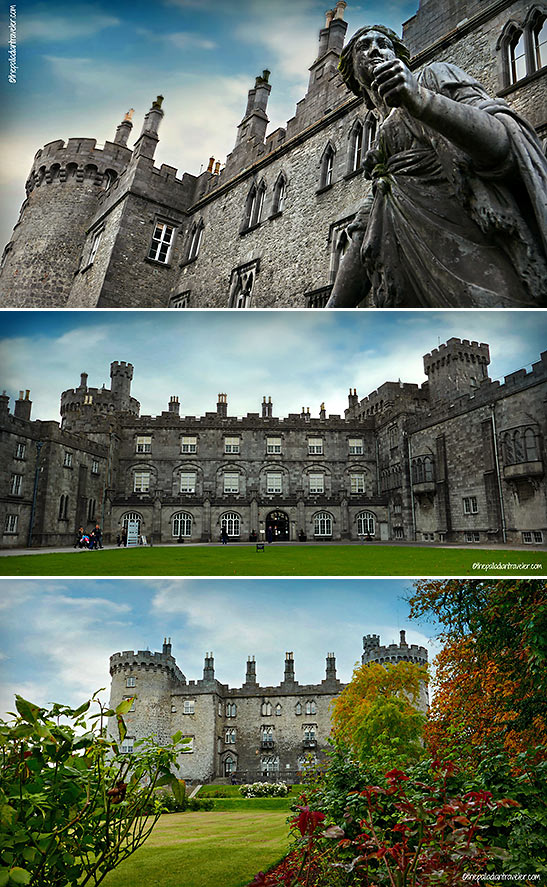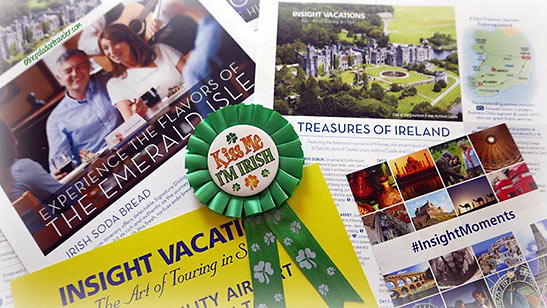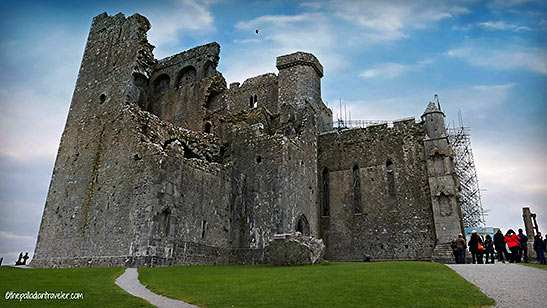 |
 |
|
 |

|
Treasures of Ireland:
The Kilkenny Way (Dispatch #4) Story and photos by Tom Weber
Hurling? Yes, hurling. It's the ancient Gaelic ball-and-stick sport that's been played all around the Emerald Isle for some 3,000 years. Like baseball, the national pastime of the USofA, hurling is THE sport in Ireland.
We learn quickly from PJ that hurling, a totally pure amateur sport – no player is paid, other than for his day job, or receives commercial endorsements – is comprised of two opposing 15-man teams (the distaff version of the game is called camogie) that, at the senior level, play two, pedal-to-the-metal, 35-minute halves. Each player, sans protective pads, but wearing a mandatory plastic helmet with a face guard, uses a hurley, a wooden stick made from ash with a flattened, curved end to carry, pass and hit the sliotar, a cork-core, leather-wrapped ball, about the size of a tennis ball. The object of hurling is to navigate the defense and hit the sliotar through the uprights of the goal posts (1 point), or strike it past the opposing team's goalie into the goal net (3 points). The team with the most points as time runs out is declared the winner of the match.
Surprisingly, no one's offered a slot to play for the mighty black-and-amber Cats, so the "band of merry media" boards the Insight motor coach and follows PJ into Kilkenny City to his sports pub-restaurant, Lanigans, all decked out with hurling memorabilia.
Pints of Guinness all around and on the house, and bowls of piping hot, wholesome Irish stew on Insight's euro. Mm, mm, mm. It doesn't get any better than this.
A farewell fist bump with PJ, the Kilkenny way, and I make my way out of Lanigans and head back to the motorcoach. Along the way, I stop briefly inside Kilkenny Castle Park to admire the 13th century Anglo-Norman stone fortress and its well-manicured gardens overlooking the River Nore. The challenge of hurling; the beauty of a Guinness; the goodness of Irish stew; and, a castle thrown in for good measure. Not a bad way to jumpstart a visit to the southeastern corner of Ireland. Not a bad way at all. At all.
For complete information on Insight's 100+ premium and luxury-escorted journeys around Europe, including the Treasures of Ireland itinerary, just click HERE, or call toll free 1-888-680-1241, or contact your travel agent.
St. Patrick, the patron saint of Eire, singlehandedly turned pagans into Christians, and a rock, on the very spot where he began his religious conversions, is named in his honor. That's where The Palladian Traveler heads next in his quest for the treasures of Ireland. Related Articles:
|
|
Feedback for Destination Bosnia: Inside Sarajevo's Tunnel of Hope Spent time in Sarajevo in the fall of 1973…beer was excellent! --- David * * * * Hi Tom, I must say, you're photographs are always amazing. They are top notch. You bring so much class to Traveling Boy. It's photographs like yours that make me want to go out and do my own traveling. Please don't get tired of sending us your amazing adventures. It's such a delight for the soul. --- Raoul, Whittier, CA * * * * Hi Tom: --- David * * * * Hey Tom – Wow! Love those photos – they are so super that they make me A) Want to start eating NOW. B) Go there myself. C) See all that pristine beauty that looks so restful and peaceful. Great story, superb pix!!! Bravo!! --- John, Los Angeles, CA * * * * Feedback for Destination Southwestern France: Saint-Émilion Good job, Tom, and timely info. St. Émilion is in the list of places Jim Hayes and I will visit in September 2014. If we get the chance, we will exploit your experience to enhance the trip! --- Bobby Harper, Dameron, MD * * * * Feedback for Vicenza Walks – Monte Berico I lived in Vicenza for 4 years in the U.S. ARMY from 1963 to 1967. A wonderful place to explore. Palladio’s works are amazing. Have been back twice since and find new places to visit. My favorite is MONTE BERICO where I have some wonderful photos of my family. --- Dr. Albert Pizzi, Hanover, MA * * * * I liked the new TB particularly the Vicenza article that took me back as a youth when we lived in Naples and travelled up there for a baseball tourney (U.S. Military Bases dependent schools played each other.) Took me back to the plaza. --- Bill Feedback for A Canterbury Trail (Sutri) Very interesting note. I have wedroned which route the early pre-Christian and Christian pilgrims travelled to Rome from England. Is it still possible to travel the Francigena trail? --- Pawel You can find out more info on walking tours of Via Francigena at this site: http://www.compagniadeicammini.it/en/. Thanks for stopping by and commenting.. Tom * * * * Good article, enjoyed reading it. Saved your recommended sights for future use. --- Dardenne Prairie, MO * * * * You're going to be great at this Tom. Congrats. --- Donna Vissa -Montreal
|
This site is designed and maintained by WYNK Marketing. Send all technical issues to: support@wynkmarketing.com

|






